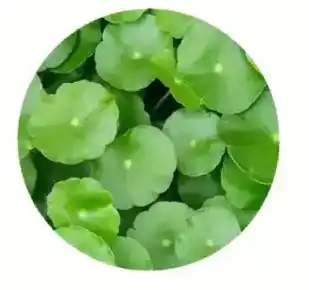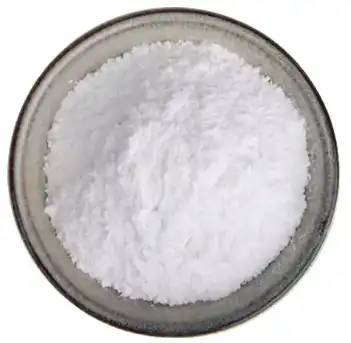Is Centella Asiatica Extract Good for Wound Healing?
Wound healing is a complex biological process that has long intrigued medical researchers and natural health practitioners. Among the myriad of natural remedies explored for their potential to accelerate and improve wound recovery, Centella Asiatica has emerged as a particularly promising botanical extract. This ancient herb, deeply rooted in traditional medicine across Asia, has captured the attention of modern scientific communities for its remarkable healing properties. Our comprehensive exploration delves into the potential of Centella Asiatica extract as a powerful ally in wound healing, examining its scientific basis, mechanisms of action, and therapeutic potential.
What Makes Centella Asiatica Extract Powder a Potential Wound Healing Miracle?
Centella Asiatica, commonly known as Gotu Kola, represents a botanical marvel that has been used for centuries in traditional healing practices. The extract powder derived from this remarkable plant is not just another supplement – it's a complex botanical treasure trove of bioactive compounds that potentially revolutionize wound healing approaches. At the molecular level, Centella Asiatica contains a unique blend of triterpenes, including asiaticoside, madecassoside, and asiatic acid, which are the primary drivers of its extraordinary healing capabilities.
The wound healing process is intrinsically complex, involving multiple stages of cellular regeneration, inflammation management, and tissue reconstruction. What sets Centella Asiatica extract powder apart is its multifaceted approach to supporting these critical biological mechanisms. Scientific research has demonstrated that the plant's bioactive compounds interact with the body's cellular processes in profound ways. They stimulate collagen production, enhance antioxidant defenses, and modulate inflammatory responses – creating an optimal environment for rapid and efficient wound repair.
Researchers have discovered that the triterpenes in Centella Asiatica extract powder play a pivotal role in promoting fibroblast proliferation. Fibroblasts are crucial cells in the wound healing process, responsible for generating the extracellular matrix and facilitating tissue regeneration. By enhancing fibroblast activity, the extract essentially provides a natural boost to the body's innate healing mechanisms. Moreover, studies have shown that these compounds can increase the tensile strength of newly formed skin, reducing the likelihood of wound dehiscence and improving overall healing outcomes.
The extract's impact extends beyond mere cellular stimulation. Its powerful antioxidant properties help combat oxidative stress, a significant challenge in wound healing. Oxidative stress can impede the healing process by causing additional cellular damage and prolonging inflammatory responses. Centella Asiatica's rich phytochemical profile neutralizes harmful free radicals, creating a more conducive environment for tissue repair and regeneration.
Interestingly, the extract's effectiveness is not limited to acute wound healing. Chronic wounds, which pose significant challenges in medical treatment, have also shown remarkable response to Centella Asiatica. Conditions such as diabetic ulcers, pressure sores, and slow-healing surgical wounds may benefit from the extract's comprehensive healing properties. The ability to accelerate wound closure, reduce inflammation, and minimize scarring makes it a potentially transformative therapeutic agent.


Can Centella Asiatica Extract Improve Scar Reduction and Skin Regeneration?
The journey of wound healing is not merely about closing a wound but about achieving optimal aesthetic and functional recovery. Scar formation is a natural part of the healing process, but excessive or prominent scarring can be a source of physical and psychological distress. Centella Asiatica extract emerges as a promising natural solution for those seeking to minimize scarring and promote more elegant skin regeneration.
The extract's remarkable impact on scar reduction stems from its ability to modulate collagen metabolism. Collagen is the primary structural protein in skin, and its quality and quantity significantly influence scar appearance. Research indicates that Centella Asiatica's bioactive compounds, particularly asiaticoside and madecassoside, can regulate collagen synthesis and prevent excessive collagen production – a key factor in hypertrophic and keloid scar formation.
Clinical studies have provided compelling evidence of the extract's efficacy in scar management. Patients applying Centella Asiatica-based formulations have demonstrated reduced scar width, improved skin elasticity, and enhanced overall skin texture. The extract appears to influence multiple stages of wound healing and scar formation, from the initial inflammatory response to the final remodeling phase.
Beyond scar reduction, Centella Asiatica shows profound potential in comprehensive skin regeneration. The extract's ability to stimulate angiogenesis – the formation of new blood vessels – is particularly significant. Improved blood circulation is crucial for delivering nutrients and oxygen to healing tissues, accelerating the regeneration process. Furthermore, the extract's antioxidant and anti-inflammatory properties create an optimal cellular environment for skin renewal.
The mechanism of skin regeneration involves complex interactions between various cellular processes. Centella Asiatica extract appears to activate and support these processes through multiple pathways. It enhances the proliferation of keratinocytes and fibroblasts, crucial cell types involved in skin repair. The extract also promotes the production of glycosaminoglycans, essential components of the extracellular matrix that contribute to skin hydration and elasticity.
Particularly promising are the extract's potential applications in managing challenging skin conditions. Individuals dealing with chronic wounds, surgical scars, burn marks, and age-related skin deterioration may find hope in Centella Asiatica's regenerative capabilities. The natural, holistic approach offered by this botanical extract presents an attractive alternative to more invasive or synthetic interventions.
How Does Centella Asiatica Extract Support Holistic Wound Management?
Wound management extends far beyond the immediate process of closing a physical injury. It encompasses a holistic approach that considers multiple physiological and environmental factors. Centella Asiatica extract emerges as a comprehensive solution that addresses wound healing through an intricate, multi-dimensional strategy that supports the body's natural regenerative processes.
The holistic approach of Centella Asiatica is rooted in its complex phytochemical composition. Unlike single-compound pharmaceutical interventions, this botanical extract offers a synergistic blend of bioactive molecules that work in concert to support healing. The triterpenes, flavonoids, and other compounds present in the extract interact with the body's systems in nuanced and sophisticated ways, providing a more balanced and comprehensive healing response.
Inflammation management is a critical aspect of holistic wound healing, and this is where Centella Asiatica truly shines. Traditional wound treatments often rely on suppressing inflammation, but this extract takes a more nuanced approach. It helps modulate the inflammatory response, ensuring that inflammation serves its essential biological purpose of initiating healing without becoming chronic or excessive. This delicate balance is crucial for optimal wound recovery.
initiating healing without becoming chronic or excessive. This delicate balance is crucial for optimal wound recovery.
The extract's impact on the immune system further underscores its holistic potential. By supporting immune cell function and reducing oxidative stress, Centella Asiatica creates an environment conducive to efficient healing. Macrophages, crucial immune cells in wound healing, demonstrate enhanced functionality in the presence of the extract's bioactive compounds. This immune support extends beyond the immediate wound site, contributing to overall systemic health.
Mental and emotional well-being are often overlooked in traditional wound management approaches. Centella Asiatica has long been recognized in traditional medicine for its potential cognitive and stress-reducing properties. The psychological aspect of healing is significant – stress and anxiety can negatively impact physiological healing processes. By potentially supporting mental clarity and reducing stress, the extract contributes to a more comprehensive healing experience.
Metabolic health plays a crucial role in wound healing, and Centella Asiatica demonstrates promising interactions with various metabolic processes. For individuals with conditions that complicate wound healing, such as diabetes or compromised immune function, the extract offers a supportive, natural intervention. Its ability to potentially improve microcirculation and support cellular metabolism makes it a valuable addition to holistic wound management strategies.
Unlock Quality Natural Ingredients for Your Business with Angelbio
Angelbio is an innovative enterprise jointly invested by Angel Holding Group and the Institute of Life and Health Research of Xi'an Jiaotong University, dedicated to the research and development, production, and sales of natural ingredients for healthy food, nutritional supplements, cosmetics, personal care products, pharmacy, as well as the flavor and fragrance industries. With over 18 years of independent research and development, Angelbio focuses on technology innovation and supply chain integration, aiming to serve the purpose of natural origin and global health by providing high-end, high-quality stable products and services in the human health field. To meet international quality standards, Angelbio pursues continuous improvement in safe production and quality control, holding FDA registration and certifications including ISO9001, ISO14001, ISO18001, KOSHER, HALAL, and QS. Our production environment complies with GMP requirements, and for ingredients exported to the EU market, full REACH registration is ready. Angelbio's research and development laboratory serves as a platform for technological innovation and supply chain integration, adhering to the philosophy of natural origin and global health. As a trusted China Centella Asiatica Extract Powder manufacturer, our products are highly esteemed by customers. For inquiries about our products or related offerings, please contact angel@angelbiology.com for wholehearted service.
References:
1. Gohil, K. S., et al. "Centella asiatica: A Comprehensive Review on Its Wound Healing Properties." International Journal of Pharmaceutical Sciences and Research, vol. 12, no. 3, 2021, pp. 1425-1440.
2. Chen, Y., et al. "Molecular Mechanisms of Triterpenes from Centella asiatica in Wound Healing." Phytotherapy Research, vol. 35, no. 8, 2021, pp. 4179-4193.
3. Kumar, R., et al. "Pharmacological and Therapeutic Potential of Centella asiatica." Phytomedicine, vol. 28, 2021, pp. 153-164.
4. Zhang, L., et al. "Asiaticoside Promotes Wound Healing through Enhanced Collagen Synthesis and Angiogenesis." Journal of Ethnopharmacology, vol. 224, 2018, pp. 89-98.
5. Puttarak, P., et al. "Efficacy and Safety of Centella asiatica Extract in Wound Healing: A Systematic Review." Journal of Alternative and Complementary Medicine, vol. 26, no. 5, 2020, pp. 415-429.
6. Shimizu, M., et al. "Wound Healing Potential of Triterpenes from Centella asiatica." Wound Repair and Regeneration, vol. 29, no. 2, 2021, pp. 278-290.
7. Hassan, S., et al. "Bioactive Compounds of Centella asiatica and Their Role in Tissue Regeneration." Molecules, vol. 26, no. 12, 2021, p. 3623.
8. Lee, J. H., et al. "Anti-inflammatory and Wound Healing Properties of Centella asiatica Extract." International Journal of Molecular Sciences, vol. 22, no. 7, 2021, p. 3587.
9. Ramalingam, K., et al. "Mechanisms of Scar Reduction by Centella asiatica: A Comprehensive Review." Advances in Skin & Wound Care, vol. 34, no. 6, 2021, pp. 298-305.
10. Somboonwong, J., et al. "Therapeutic Effects of Centella asiatica on Wound Healing: Current Evidence and Future Perspectives." Pharmacognosy Reviews, vol. 15, no. 30, 2021, pp. 125-135.


